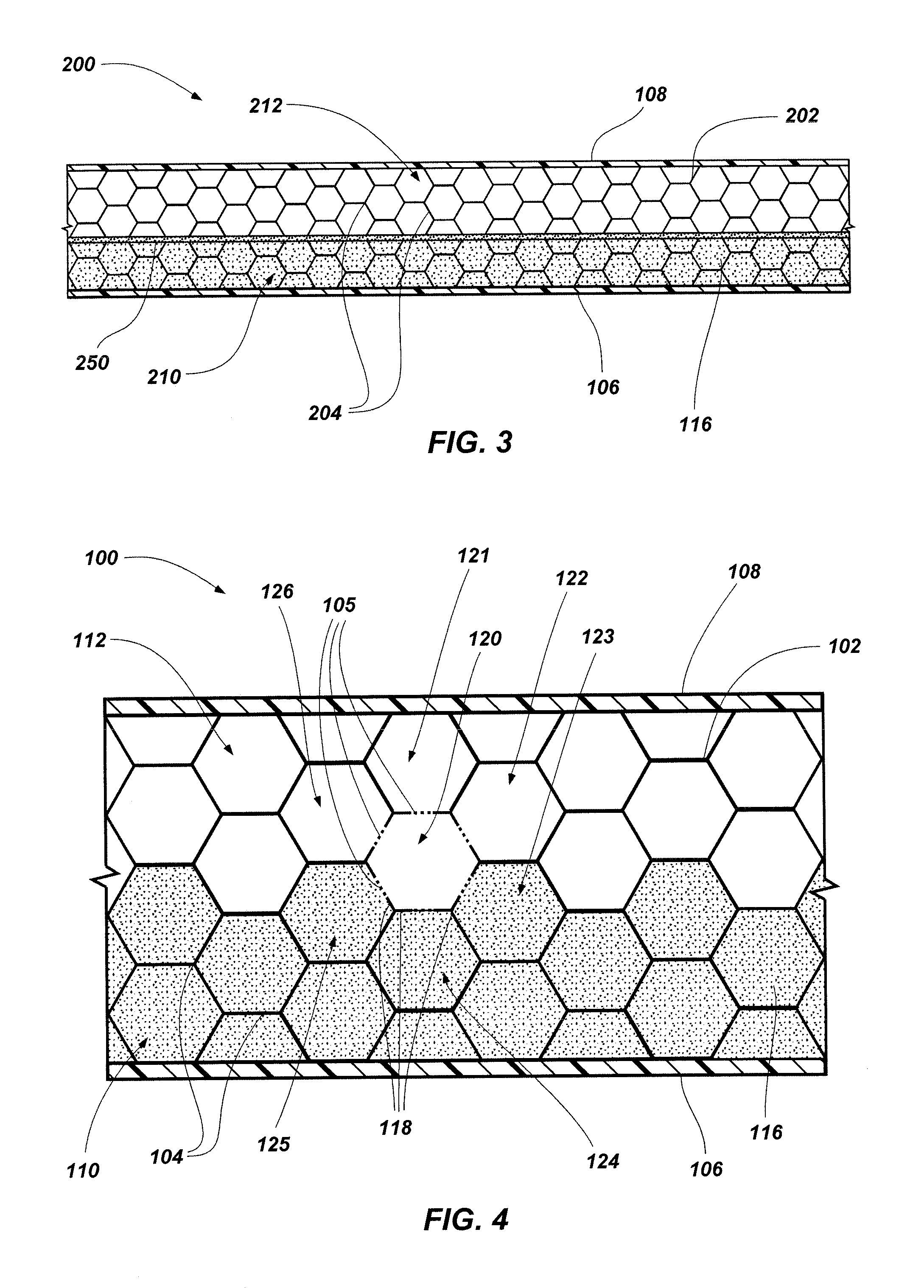Dissipative structures and related methods
a technology of dissipative structures and related methods, applied in the direction of shock absorbers, machine supports, mechanical equipment, etc., can solve the problems of ineffective absorption and dissipation of shock pressure, substantial damage, injuries, death, etc., and achieve the effect of absorbing shock pressure and dissipating shock pressur
- Summary
- Abstract
- Description
- Claims
- Application Information
AI Technical Summary
Problems solved by technology
Method used
Image
Examples
Embodiment Construction
[0021]The illustrations presented herein are not meant to be actual views of any particular material, apparatus, system, or method, but are merely idealized representations which are employed to describe embodiments of the present invention. Additionally, elements common between figures may retain the same numerical designation for convenience and clarity.
[0022]FIG. 1 illustrates a perspective view of an embodiment of a dissipative structure 100. Referring to FIG. 1, the dissipative structure 100 may include a cell structure 102. The cell structure 102 may include a plurality of interconnected cells 104 disposed between one or more outer layers. The interconnected cells 104 may include apertures 105 extending between the interconnected cells 104. Each interconnected cell 104 may be interconnected to at least one additional cell of interconnected cells 104 through one or more apertures 105. For example, as described in detail below, one cell of the interconnected cells 104 may be con...
PUM
 Login to View More
Login to View More Abstract
Description
Claims
Application Information
 Login to View More
Login to View More - R&D
- Intellectual Property
- Life Sciences
- Materials
- Tech Scout
- Unparalleled Data Quality
- Higher Quality Content
- 60% Fewer Hallucinations
Browse by: Latest US Patents, China's latest patents, Technical Efficacy Thesaurus, Application Domain, Technology Topic, Popular Technical Reports.
© 2025 PatSnap. All rights reserved.Legal|Privacy policy|Modern Slavery Act Transparency Statement|Sitemap|About US| Contact US: help@patsnap.com



